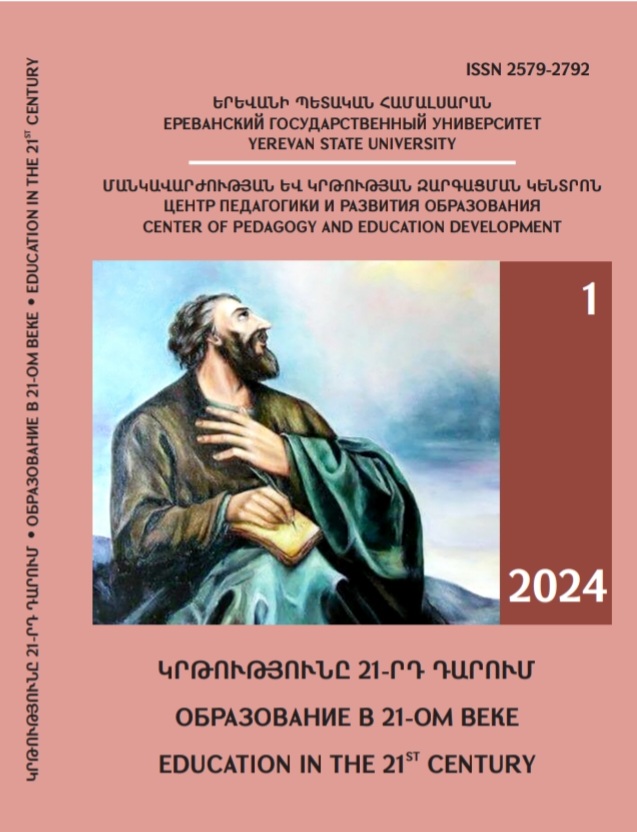THE IMPACT OF MULTILIGUAL ENVIRONMENT ON CHILD’S THINKING AND SPEECH DEVELOPMENT
DOI:
https://doi.org/10.46991/ai.2024.1.24Keywords:
bilingualism, plurilingualism, verbal thinking, speech development, information technologyAbstract
Facing the social and cultural challenges of modern globalizing world, multilingualism and its impact on the formation and development of human thinking and speech processes are of unprecedented interest, because the inevitable involvement of modern information technologies in that process leads to highly contradictory results. The study of this issue currently serves as a subject of multi-level, interdisciplinary research and has gained undeniable actuality in recent decades. Thus, from the viewpoint of language education policy, plurilingualism has been considered in a positive light, underlining the importance and advantages of mastery of several languages by a person in the modern world, whereas from the point of view of Psycholinguistics, the simultaneous or nonparallel presence of several languages in the life of a child, especially in early childhood, can cause serious developmental language disorders (DLD). From the point of view of Neurolinguistics, a multilingual environment can have an exceptionally positive effect on the variety of neural network connections, that are continuously formed among nerve cells in a child's developing brain. And learning new languages in lifetime, thus can prevent from many diseases, such as Alzheimer's disease, Parkinson's disease, as well as age-related dementia. Consequently, it emerges that plurilingualism, itself, is of great interest to a wide range of researchers, because it can have a fatal role and significance in a person's life, depending on: when (at what age and how long), and how (in what conditions) it was formed. Our goal in the current article is to clarify the content of the concept of plurilingualism, highlight the ontogenesis of thinking and speech, that is, the stages of their development in a person's life since his/her birth, as well as to study and bring out the negative and positive effects that multilingual environment can have on a child's thinking and speech development. Our focus in this study will be especially on children aged zero to six, because the main problems that multilingualism basically leads to, are mostly found among children of this age.
References
Թովմասյան Հ., Հոգելեզվաբանություն, Երևան, Լիմուշ, 2022, 139էջ
Լեզուների իմացության /իրազեկության համաեվրոպական համակարգ, Ուսումնառություն, Դասավանդում, Գնահատում, Կրթության հարցերով պատասխանատու հանձնաժողով, Լեզվի քաղաքականության վարչություն, Ստրասբուրգ, թարգմանություն, Նորք Գրատուն, 2005, 278էջ
Ցեյտլին Ս., Լեզուն և երեխան. Երեխայի խոսքի լեզվաբանություն, Մ., 2000, 240էջ
Bialystok E., Bilingualism in Development: Language Literacy and Cognition, Cambridge University Press, 2001, 288p.
Field J. Psycholinguistics. The Key Concepts, London-New York: Routledge, 2004, 388p.
Залевская А., Введение в психолингвистику, М.: РГГУ, 2007, 196с.
Зимняя А., Лингвопсихология речевой деятельности, Издательство Московский психологосоциальный институт, Воронеж, 2001, 448с.
Пашук С., Психология речи. Спб.: Издательство МИУ, 2010, 296c.
Downloads
Published
How to Cite
Issue
Section
License
Copyright (c) 2024 Naira Poghosyan

This work is licensed under a Creative Commons Attribution-NonCommercial 4.0 International License.

